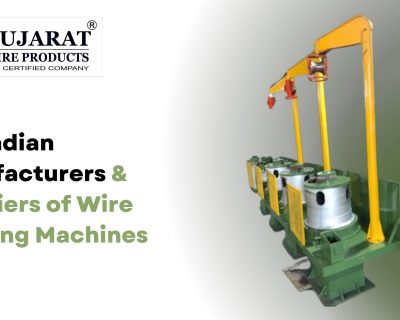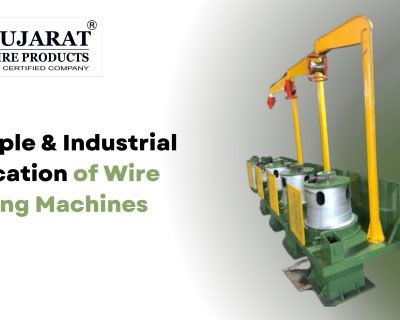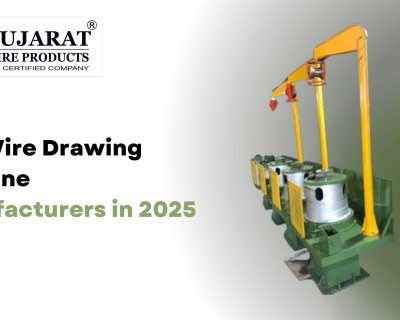Blog

Stainless Steel Wire Drawing Machine: Powering Die Precision
Introduction
Stainless steel wire demands precision that carbon steel forgives. A diameter variance of 0.002mm ruins medical guidewires, electronic connectors, and aerospace cable harnesses—applications where tolerances matter more than production speed. Most wire drawing machines handle mild steel adequately but fail when processing 304 or 316 stainless grades because they underestimate three critical factors: work hardening rates that triple during deformation, heat generation that alters grain structure, and die wear that accelerates 60% faster than with carbon steel. The gap between general-purpose equipment and stainless-grade machines determines whether operations produce specification-compliant wire or scrap at rejection rates exceeding 12%. This guide explains how die precision controls stainless steel quality, the technical features that maintain tolerances through extended production runs, material challenges that destroy inadequate equipment, and maintenance protocols that separate three-year die life from thirty-thousand-cycle failures.
Why Stainless Steel Demands Different Engineering?
Work Hardening Characteristics
Stainless steel work hardens significantly during drawing. Each pass through a die increases material hardness by 15-25% depending on alloy composition and reduction percentage. This strain hardening requires carefully controlled reduction schedules—typically 15-20% diameter reduction per pass versus 25-30% for mild steel.
Excessive reduction causes wire breakage and surface cracking. Insufficient reduction wastes production capacity. Die approach angles between 6° and 9° optimize flow and minimize work hardening while maintaining surface finish.
Heat Management Requirements
Drawing generates friction heat that transfers into the wire rather than escaping through chips like machining operations. Stainless steel’s lower thermal conductivity traps this heat, raising wire temperature to levels that affect grain structure and mechanical properties.
Water tank drawing machines immerse the process in coolant to control temperature rise. This prevents heat-induced surface defects and maintains consistent material properties. Air-cooled systems cannot handle the thermal loads stainless steel drawing generates at production speeds.
Die Precision Fundamentals
Approach Zone Geometry
The die approach zone must maintain conical angles with precision within ±2° across the entire surface. Surfaces must be straight without radius blending or contour variations. Any deviation creates turbulent material flow that produces diameter inconsistencies and surface imperfections.
Die centerlines must align perfectly with the drawn wire path. Misalignment of 0.05mm causes ovality and uneven wall thickness in tubular applications. This geometric precision requires diamond machining and laser verification during die manufacturing.
Bearing Zone Control
The parallel bearing section determines final wire diameter. Bearing length should equal 25-50% of wire diameter depending on material hardness. Stainless steel typically uses 25-35% bearing lengths to prevent heat buildup from extended contact.
Bearing surfaces must maintain parallelism across the entire length. Taper or waviness transfers directly to finished wire diameter variations. Digital micrometers with 0.001mm resolution verify bearing dimensions during die inspection cycles.
Die Material Selection
Diamond dies deliver the surface finish and dimensional stability stainless steel applications demand. Natural diamond maintains tolerances within ±0.0005mm and handles stainless steel’s abrasive properties without rapid wear. Polycrystalline diamond (PCD) offers similar performance at lower cost for wire diameters above 0.30mm.
Tungsten carbide dies wear 40% faster than diamond when processing stainless grades. The cost premium for diamond dies recovers within 50,000 production cycles through extended die life and reduced diameter drift.
Machine Features for Sustained Precision
Variable Frequency Tension Control
Stainless steel requires higher drawing forces than carbon steel—often 30-50% greater for equivalent reductions. Variable frequency drives provide the torque control needed to maintain consistent tension without overloading motors or breaking wire.
Closed-loop tension feedback systems adjust motor speed in real-time based on load cell measurements. This prevents tension spikes during startup and compensates for die wear throughout production runs.
Automated Die Cooling and Lubrication
Boundary layer lubrication prevents metal-to-metal contact between wire and die surfaces. Stainless steel drawing consumes lubricant 60% faster than mild steel due to higher friction coefficients. Automated lubrication systems maintain consistent soap solution concentration and flow rates.
Water cooling circulation through die holders removes frictional heat before it transfers into the wire. Temperature monitoring ensures coolant maintains effectiveness throughout production shifts.
Quick-Change Die Systems
Stainless steel operations often serve multiple wire specifications across medical, electronics, and aerospace markets. Tool-free die mounting systems reduce changeover time from 45 minutes to 12 minutes, enabling smaller batch production without efficiency losses.
Precision die holders maintain alignment tolerances across repeated changes. This prevents the accumulation of positioning errors that degrade wire quality over multiple production cycles.
Production Challenges and Solutions
Stainless steel’s higher strength requires drawing forces that stress machine frames and bearing assemblies. Reinforced construction and isolated mounting systems prevent vibration that causes dimensional variations. Surface defects from die wear appear gradually—diameter drift of 0.001mm accumulates over 10,000 cycles before rejection rates increase noticeably.
Laser diameter gauges provide continuous measurement enabling predictive die replacement before quality degrades. This prevents batch rejections that cost ₹80,000-1.5 lakh depending on wire grade and application.
FAQs
What diameter tolerances are achievable with diamond dies?
Diamond dies maintain tolerances within ±0.0005mm for wire diameters below 1mm. Larger diameters achieve ±0.001mm consistently across 50,000+ production cycles before replacement.
How often do stainless steel drawing dies require replacement?
Diamond dies process 40,000-60,000 cycles depending on wire grade and reduction schedules. Tungsten carbide dies last 15,000-25,000 cycles. Monitoring diameter drift determines optimal replacement timing.
Can machines handle both 304 and 316 stainless grades?
Yes, with appropriate die materials and lubrication systems. 316 grade’s higher molybdenum content increases abrasiveness requiring more frequent die inspection compared to 304.
What maintenance prevents precision degradation?
Daily coolant concentration checks, weekly die alignment verification, monthly bearing inspections. Laser diameter measurements every 5,000 cycles track die wear patterns enabling predictive maintenance.
Conclusion
Stainless steel wire quality depends entirely on die precision maintained through specialized machine design, not general-purpose equipment adapted for harder materials. The technical features that sustain tolerances determine whether operations serve premium markets or compete on commodity pricing.
Gujarat Wire Products engineers stainless steel wire drawing systems built around diamond die precision, adaptive tension control, and the thermal management stainless grades demand. Our machines maintain specification tolerances across extended production cycles while handling the material challenges that destroy conventional equipment. Ready to produce stainless steel wire that meets aerospace and medical specifications? Visitgujaratwireproducts.com or contact our materials engineering team for application analysis and equipment recommendations based on your wire specifications and production requirements.




